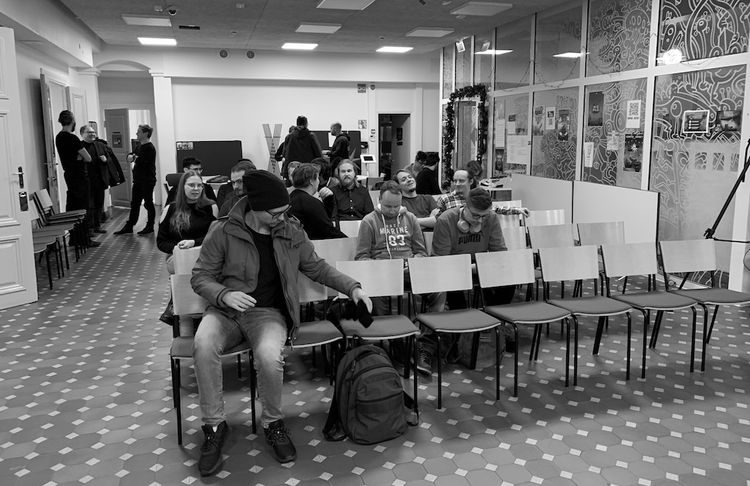EGD News #35 — Stillfront is going places
This newsletter was sent out on June 26th 2020.
If you’re reading this and you aren’t a subscriber, you can sign up here.
On to this weeks news.
Stillfront Group is going places 🎮

Last week, I wrote about Stillfront raising $128m from a directed share issue. I decided to dig a bit deeper into the company. I think I’m becoming a fan of Stillfront. Here’s why.
In a nutshell, Stillfront Group, founded in 2007, is a Swedish company that consists of several gaming studios (fourteen as of early June 2020), each of them operating as autonomous subsidiaries.
Going back in time, Stillfront really got going when it acquired Goodgame Studios in 2017. The press release stated that “A core element within Stillfront’s business model is to actively identify, evaluate and acquire interesting gaming companies active in the mobile and browser strategy genre. During the last four years, the company has evaluated more than 1,000 targets and closed only eight acquisitions that have fulfilled the company’s criteria.”
Now in June 2020, the company has acquired 14 studios, most recently Storm8 and Candywriter Inc., both from the United States. But let’s go back to 2017. That’s when a much larger Goodgame Studios was acquired by a much smaller Stillfront Group. As Gamasutra hailed the acquisition news in 2017, that “Goodgame Studios going public through $320M Stillfront merger.”
The acquisition made it possible for Goodgames to IPO through a merger. Gamasutra continued that “The deal will see the Stockholm-based Stillfront Group acquire Goodgame, with current Goodgame shareholders receiving around 40 percent of the shares and voting rights of the newly combined company.”
Before 2017, Stillfront was a different company: they had been acquiring studios like Simutronics, and Coldwood Interactive, the company behind premium PC/console game Unravel.
Unravel is a great game, and I’ve played it a lot with my kids on the PS4, but those kinds of games weren’t the right ones for Stillfront to become significant. It was interesting to watch their investor presentation from 2016 (sorry that it’s only in Swedish), which feels so different from what Stillfront is today.
What happened in 2017
I believe that Stillfront’s model started to evolve and improve when eRepublik Labs was acquired in early 2017. The CEO and Co-Founder of eRepublik, Alexis Bonte, joined Stillfront’s management team, and the philosophy of building Stillfront formed.
In a recent interview with Joseph Kim and Eric Kress, Alexis Bonte outlined how they operate.
Stillfront HQ setup: expertise in gaming and M&A
- CEO Jörgen Larsson has a strong financial background, can educate investors in the public market, to allow these big deals to happen
- “Studio founder” DNA, in Alexis Bonte, who’s been a gaming founder for ages, knows what the acquired studio founders want
- M&A head, with extensive experience in M&A
- Investment banks helping
- More gaming DNA: They’ve recently brought on GoodGames’ chief product officer and KIXEYE‘s chief technology officer
Funnel to meeting and acquiring studios
- Broad beginning of the funnel: Have met with 1,400 studios, but only acquired 14 so far
- Common characteristics of acquired studios: stable revenues from matured/evergreen games with healthy long term metrics, not growing as they’d want, they’re older studios
- Quality of the team they have, great technical talent, and creative risk-takers.
- For the future: can the studio operate and grow independently under Stillfront.
In a Pocket Gamer talk with CEO Jörgen Larsson, Stillfront is acquiring companies in two tracks: looking for companies $5m to $15m, and another track for larger $15m to $100m companies. These require a different process, where the lower run rate track can come from their balance, versus raising in a direct issue, like recently in June 2020, where Stillfront raised $114 in a direct issue.
The next big games company
Why do I believe that Stillfront is so exciting?
- It isn’t easy to build a big games company. It would be best if you had hit games coming out every second year to enable growth.
- Being a publicly listed games company is hard. You will be punished for inconsistent results.
- Stillfront’s mode defies the hit-driven nature of the games industry. It all makes sense when you consistently consolidate mature free-to-play games, combined with a diverse set of UA and data-driven knowledge of all studios.
- Applovin and others dominating the hyper-casual space haven’t yet found a way to move to more long-term engaging games. Time will tell if the Machine Zone acquisition changes things, or was it only for their UA talent?
- Others? The only publisher player in the market is Tilting Point, who are taking bets on new games, and not defying the hit-driven nature of developing and publishing new games.
- What is the difference between Zynga and Stillfront? Stillfront is listed in the Stockholm stock exchange, so their DNA is more transparent in how they operate, and IMHO, I believe that the Nordic culture is a better fit for gaming. Stillfront was founded on the idea of consolidating independent studios, and they are comfortable doing deals in the lower range. And it has the team to pull it off.
Alexis Bonte explains it well in a presentation at Pocket Gamer in 2019:
“The reason we’re an attractive investment for the stock market is we’re 12 studios with 36 games, so we are very predictable returns. And for us to have a hit game is just a cherry on the cake. We don’t need hit games. And that’s what markets and investors have traditionally hated about the games industry is they keep telling you, ‘Oh, it’s just a hit-driven industry.’ What we do differently is we gather together a lot of studios that already had medium or big hits, that they’re continuing to run. And then, by making them part of the broader combination of studios, we increase our chances of their next games to be more successful and also give them the ability to scale the existing games that they have, that are successful, to being even more successful.”
How is Stillfront doing?
- If you look at their stock price in the last six months, it went from 367 SEK on Dec 1, 2019, to 805 SEK on June 1, 2020. The company made two more significant acquisitions of Storm8 and Candywriter Inc., and it was rewarded for showing good numbers during the Covid-19 outbreak.
- Stillfront will have more candidates for an acquisition than Zynga since Stillfront is comfortable acquiring smaller studios and has been building a cross-platform portfolio of free-to-play studios on mobile, browser, and PC.
Blog 📄
This week I wrote the first part of an article series on how game company founders should conduct board meetings. Founders often think about board meetings in a very unstructured way. The premise is that let’s meet up and chit-chat informally. That’s okay for the first year, but eventually, as investors get involved, it’s a good idea to get some sort of a format in place.
In this article, I cover the basics of a startup board, what should the expectations be like for board meetings, and how you structure an effective agenda for board meetings. I also share a template agenda for founders to take into use.
— Board Meetings For Gaming Startups – part 1
Podcast 🎙
This week on the podcast, I’m talking with Richard Kim and Sam Englebardt, who are partners at Galaxy Interactive, a $325m fund shaping the future of interactive entertainment. Richard and Sam have been investing into gaming for a while now and in this episode, we discuss how they see financing in gaming evolving, what it takes to get into competitive rounds and how they see as key in the gaming space in the next 2-5 years.
— Richard Kim and Sam Englebardt, Galaxy Interactive
Articles worth reading 📃
+ Nintendo is slowing down its mobile business — Nintendo appears to be slowing down its mobile releases as its Switch hardware and software sales continue to see impressive growth. On this Bloomberg article, Mobile games consultant Serkan Toto noted that Nintendo’s “enormous success on console reduced the need and the pressure to put resources into mobile” and that the company now has an empty mobile pipeline.
+ a16z podcast on gaming — Last week we covered how VC firm a16z have been geeting serious about gaming investments. This week, on the a16z Sixteen Minutes podcast, a16z partners Jonathan Lai and Andrew Green, talk about mobile, social, cloud gaming and identity. Could HTML5 games become the next frontier of cloud gaming?
+ Tiktok and game streaming — Many of the top influencers are gamers, and they could make so much more from being able to engage their audiences through gaming content. “These TikTok stars are the next big digital creators, and there are opportunities for them in the gaming world,” Jason Wilhelm, a YouTuber who started a channel in 2011 with Call of Duty gaming content, and now serves as CEO of TalentX Gaming.
+ First game, then metaverse — Raph Koster’s company Playable Worlds has raised $10m from VCs. Raph is great and he’s seen everything in gaming. We had him over in Helsinki a few years ago to do a lecture on social games, MMOs and virtual worlds. With this new company, Raph says that “We’re interested in building rich alternate worlds. This absolutely is a game. It’s not just a social space”
Last week 🗓
If you missed out on the EGD news last week, I took a look at the VC firm Andreessen Horowitz and how their interest in gaming has grown in the past year. What is a16z looking for in gaming startups?
— EGD News #34: a16z and gaming
Quote that I’ve been thinking about 💬
“In my whole life, I have known no wise people (over a broad subject matter area) who didn’t read all the time — none, zero.”
—Charlie Munger, Poor Charlie’s Almanack
Did you enjoy this article?
Here’s some of our previous newsletters.





